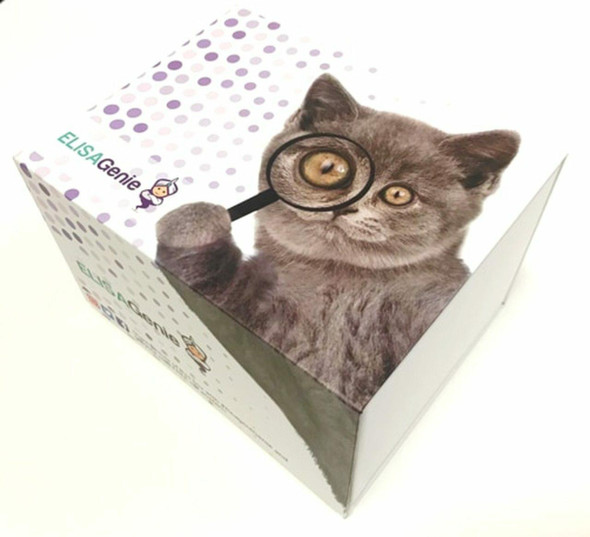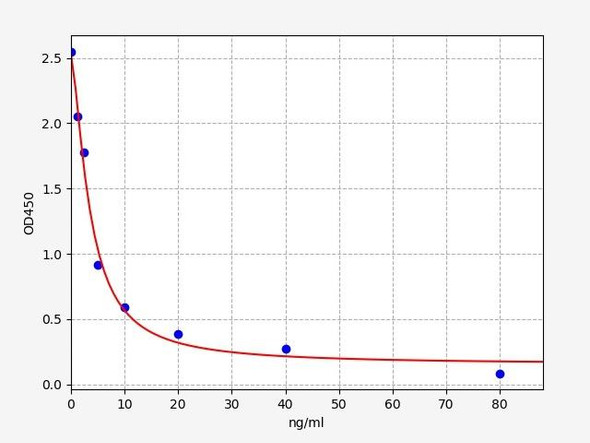Mouse Cell Signalling ELISA Kits 5
Mouse TSH ELISA Kit
- SKU:
- MOFI01173
- Product Type:
- ELISA Kit
- Size:
- 96 Assays
- Uniprot:
- P12656
- Sensitivity:
- 0.75ng/ml
- Range:
- 1.25-80ng/ml
- ELISA Type:
- Sandwich
- Synonyms:
- TSH, Thyroid Stimulating Hormone
- Reactivity:
- Mouse
Description
Mouse TSH ELISA Kit
TSH (Thyroid-Stimulating Hormone) is a hormone produced by the pituitary gland that regulates the function of the thyroid gland. It stimulates the thyroid to produce and release thyroxine (T4) and triiodothyronine (T3), which are essential for various physiological processes. This mouse TSH ELISA kit is designed to measure the levels of TSH specifically in mouse samples, providing researchers and clinicians with a quantitative tool to assess thyroid function in mice for various experimental or diagnostic purposes.
Key Features
| Save Time | Pre-coated 96 well plate | |
| Quick Start | Kit includes all necessary reagents | |
| Publication Ready | Reproducible and reliable results |
Overview
| Product Name: | Mouse TSH ELISA Kit |
| Product Code: | MOFI01173 |
| Size: | 96 Assays |
| Alias: | TSH, Thyroid Stimulating Hormone |
| Detection Method: | Sandwich ELISA |
| Application: | This immunoassay kit allows for the in vitro quantitative determination of Mouse TSH concentrations in serum plasma and other biological fluids. |
| Sensitivity: | 0.75ng/ml |
| Range: | 1.25-80ng/ml |
| Storage: | 4°C for 6 months |
| Note: | For Research Use Only |
Additional Information
| Recovery | Matrices listed below were spiked with certain level of Mouse TSH and the recovery rates were calculated by comparing the measured value to the expected amount of Mouse TSH in samples.
| ||||||||||||||||||||
| Linearity: | The linearity of the kit was assayed by testing samples spiked with appropriate concentration of Mouse TSH and their serial dilutions. The results were demonstrated by the percentage of calculated concentration to the expected.
| ||||||||||||||||||||
| CV(%) | Intra Assay <8 Inter Assay <10 |
| Recovery | Matrices listed below were spiked with certain level of [ANALYTE] and the recovery rates were calculated by comparing the measured value to the expected amount of [ANALYTE] in samples.
| |||||||||||||||||
| Linearity: | The linearity of the kit was assayed by testing samples spiked with appropriate concentration of [ANALYTE] and their serial dilutions. The results were demonstrated by the percentage of calculated concentration to the expected.
|






